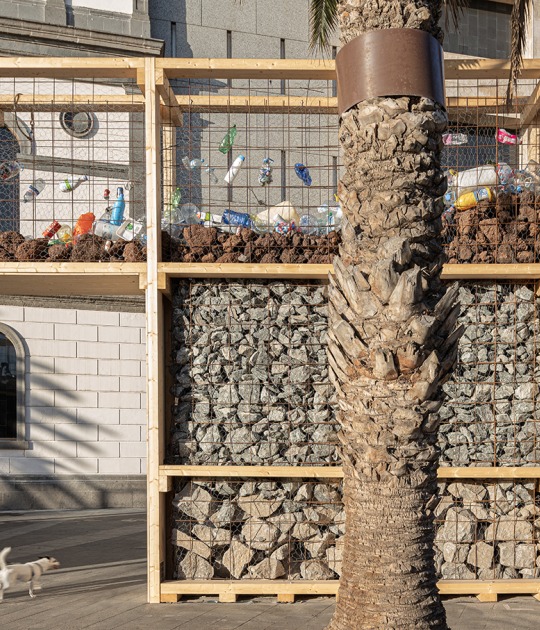The pavilion celebrates local tradition so it was built in bamboo, a material that prevails in all states, and by expert craftsmen from the region. This entailed a great challenge since in 60 days the bamboo was obtained, 90 artisans were gathered and the pavilion was built. The carpentry details were carried out by the craftsmen while many project integration decisions were made on the spot.

Northeast Pavilion at the Surajkund Craft Fair 2023 by atArchitecture. Photograph by SuryanDang.
Project description by atArchitecture
This pavilion was conceived of as a permanent exhibition space to showcase the eight North Eastern states of India as part of the 2023 Surajkund Craft Fair- an annual fair that promotes Indian handicrafts and provides a platform to artisans. The site is located in Faridabad near the historic man-made Surajkund Lake that was commissioned in the 10th century by King Suraj Pal of the Tomar dynasty. Today, the lake is inactive, but it is widely known for the Surajkund Mela which attracts more than a million visitors during its three-week run.
North Eastern India (officially North Eastern Region (NER)) is both a geographical and political administrative unit of the country. It comprises eight states - Arunachal Pradesh, Assam, Manipur, Meghalaya, Mizoram, Nagaland, Tripura and Sikkim. Ethnic diversity is high in the NER, and indigenous forms of arts and crafts are widespread. In the region, most households have a loom and wear home-made clothes. This became the main source of inspiration- with 8 indigenous looms and their working methods demonstrated by the respective artisans, tying the spaces together and becoming the focus of the exhibition.

Northeast Pavilion at the Surajkund Craft Fair 2023 by atArchitecture. Photograph by SuryanDang.
The architecture celebrates the tradition of local bamboo construction prevalent in almost all these states, and is built by skilled craftsmen from the region. The biggest challenge was to build the pavilion within a 60 day timeframe. This included time to source bamboo, travel for 90 craftsmen to reach the site and the building of the pavilion. The details of the bamboo joinery were developed with the help of the artisans, while many design integration decisions were made on site as the building was being constructed, with an emphasis on local collaboration and craftsmanship.
The rectangular layout of the pavilion encompasses eight courtyards displaying the handlooms of each state; the geometry of these spaces is inspired by the Surajkund footprint, which is a circular segment. Each of these eight cylindrical galleries intersects the hyperbolic roof at different heights, reflecting the hilly topography of the north-east of the country. The semi-open galleries display eight indigenous handlooms from the region's various tribes, and each gallery frames views of the site's landscape. The central courtyard representing Meghalaya, the rainiest landscape in the world, faces the sky and contains a pool of water. These courtyards also serve to enclose the century-old trees on the site preserving the natural landscape.
The simple and legible design makes it accessible to local and international visitors, with the meandering path through the pavilion allowing it to become a natural extension of the 100-acre fairgrounds. The open and permeable design of the space blurs the boundaries between the pavilion and the surrounding nature.









































































